Get ready to dive into the world of ramen with a twist. Chicken Chasu is the star of the show, and we’re about to unravel its secrets. As someone deeply passionate about culinary excellence, I’m thrilled to guide you through the steps of creating a bowl of ramen that’s unforgettable.
Ramen Chicken Chasu Recipes
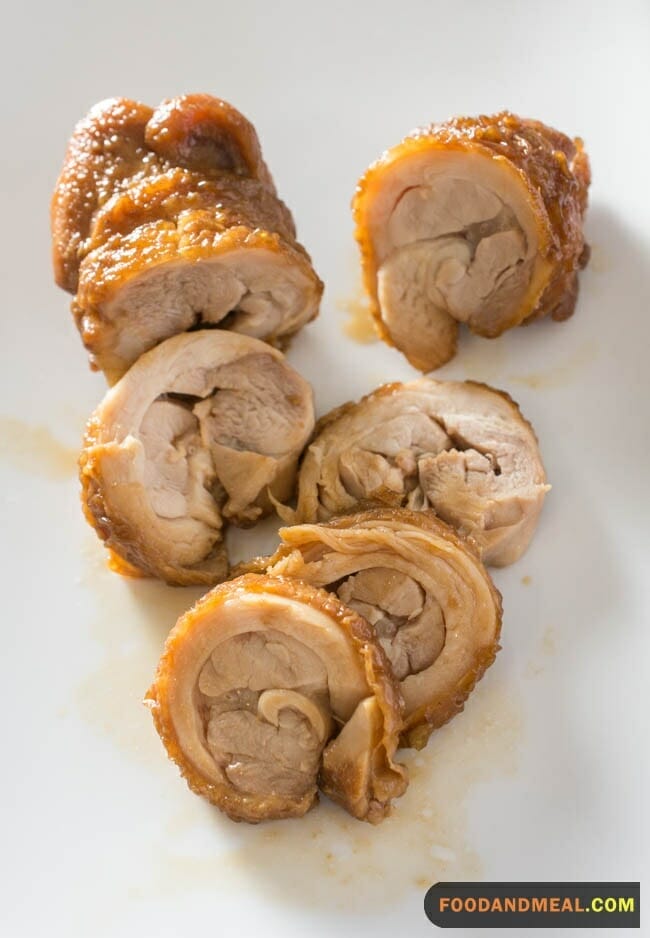
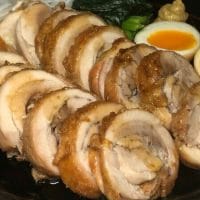
Chicken Chasu
Ingredients
- 1 pound boneless skin-on chicken thighs
- 2 ½ cups water
- 2 cups soy sauce
- ½ cup white wine dried
- ¾ cup sugar
Instructions
- Roll the chicken thighs, skin-side out, into tight rolls, and secure with cooking twine. (Tie the twine with a bow that can be easily untied later.)
- Heat a large skillet over medium heat. When it’s hot, add the chicken and brown the meat on all sides.
- In a large stockpot, combine the water, soy sauce, white wine, and sugar. Stir to dissolve the sugar completely, then add the chicken.
- Bring to a boil over high heat, then reduce the heat to medium and simmer, uncovered, for 25 minutes.
- Remove from the heat and let cool to room temperature. To let the flavors soak in evenly, rotate the chicken in the seasoning liquid every 10 minutes or so while it’s cooling. To make this easier, cover the top of the chicken with a heavy-duty paper towel; the paper will help the liquid evenly soak into the meat.
- Once the chicken is cooled to room temperature, remove it from the seasoning liquid and discard the paper towels. The chicken can be cut and used immediately, or wrapped in plastic wrap and stored in the refrigerator for a few days.
Video
Notes
Nutrition
© Food And Meal
This website provides approximate nutrition information for convenience and as a courtesy only. Nutrition data is gathered primarily from the Spoonacular Database, whenever available, or otherwise other online calculators.
Alternative Method: Sous Vide Chicken Chasu
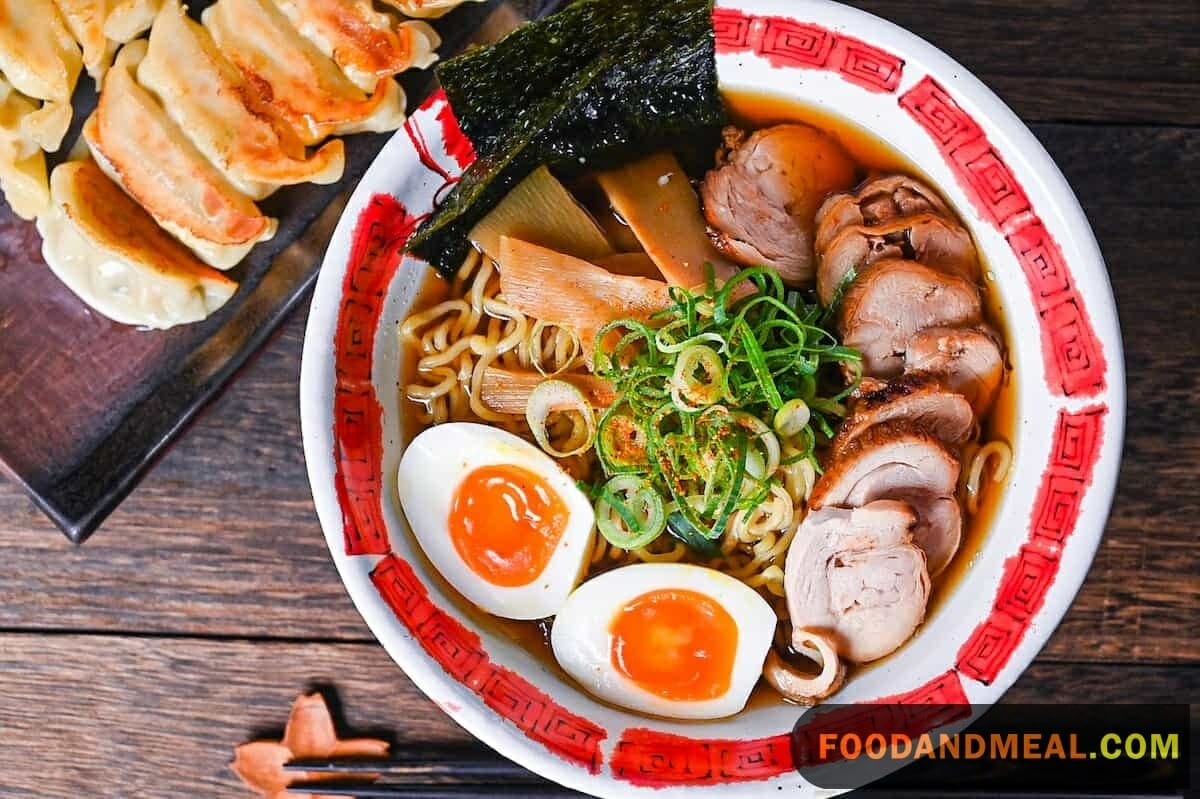
Ingredients:
- 2 boneless, skinless chicken breasts
- 3 cloves of garlic (minced)
- 1 tablespoon ginger (grated)
- 2 tablespoons soy sauce
- 2 tablespoons sake (Japanese rice wine)
- 1 tablespoon mirin
- 1 tablespoon sugar
- 1 green onion (chopped)
- Salt and pepper to taste
Instructions:
- Season the chicken breasts with salt and pepper. Place each chicken breast in a separate vacuum-sealed bag or a ziplock bag.
- In a bowl, mix together the minced garlic, grated ginger, soy sauce, sake, mirin, and sugar to create the marinade.
- Pour the marinade evenly into the bags with the chicken breasts. Seal the bags, ensuring they are airtight.
- Preheat your sous vide water bath to 140°F (60°C).
- Submerge the sealed bags with the chicken in the water bath and cook for 1.5 to 4 hours. The longer you cook, the more tender the chicken will become.
- Once the chicken is done, remove it from the bags and pat it dry with paper towels.
- Heat a pan over medium-high heat and add a little oil. Sear the chicken for 1-2 minutes on each side until it’s nicely browned.
- Slice the Chicken Chasu into thin pieces.
- Serve the sous vide Chicken Chasu over a bowl of ramen or as a topping for your favorite dishes.
Tips for making Chicken Chasu
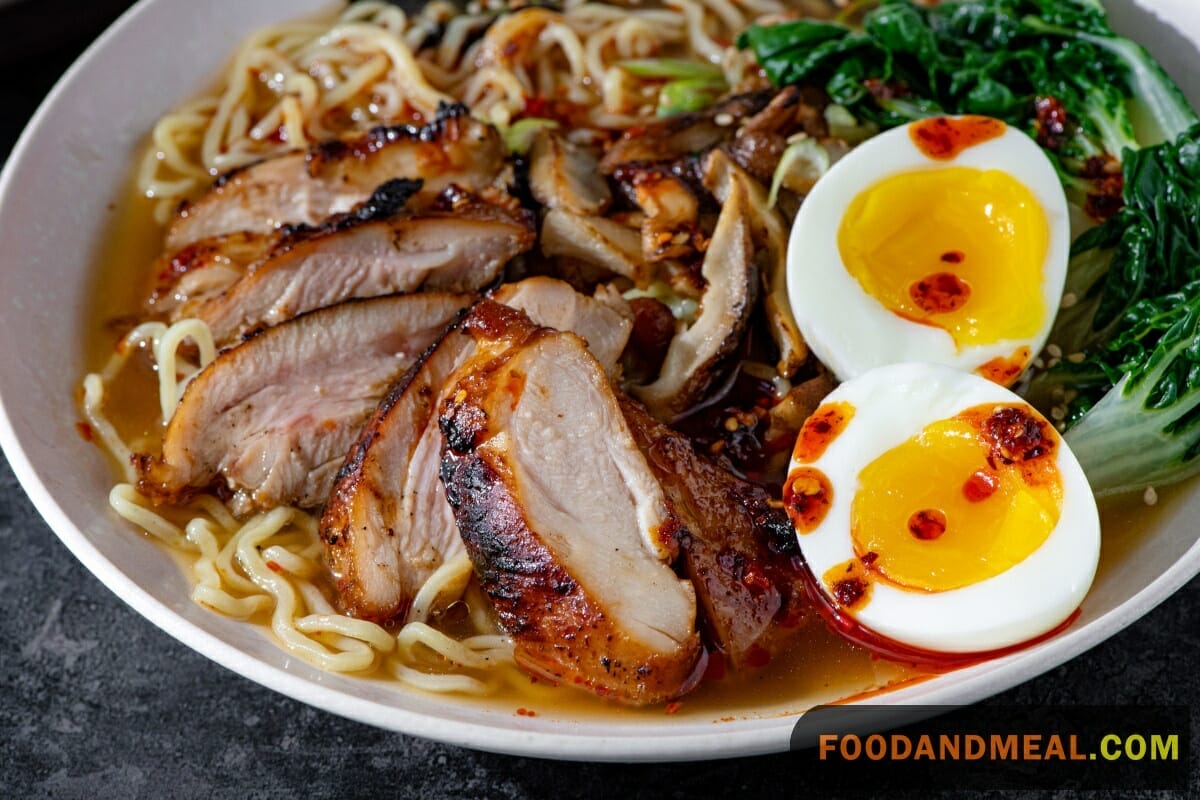
Cooking Tips
- Precision Timing: When using sous vide, pay attention to cooking time. Longer doesn’t always mean better. Aim for that sweet spot where the chicken is tender but not overcooked.
- Flavor Infusion: Let the chicken marinate in the bag for at least an hour before sous vide cooking. This allows the flavors to penetrate the meat thoroughly.
- Patience with Searing: Don’t rush through the searing step. A good sear adds flavor and texture. Make sure your pan is hot, and let the chicken brown nicely.
- Slice with Care: When it’s time to slice your Chicken Chasu, use a sharp knife and cut against the grain for that perfect texture.
- Skim the Marinade: If you plan to use the marinade as a sauce, be sure to boil it for a few minutes to kill any bacteria from the raw chicken.
Serving Suggestions
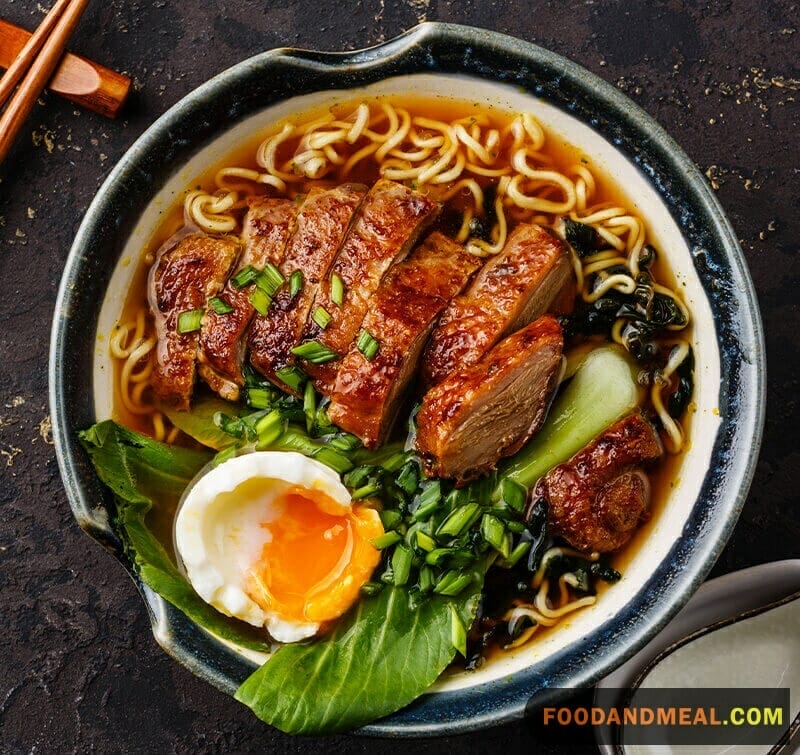
- Ramen Perfection: Add your sous vide Chicken Chasu to a bowl of steaming ramen for a classic combination. Don’t forget the soft-boiled egg and nori seaweed!
- Rice Bowl Extravaganza: Slice the Chicken Chasu thinly and serve it over a bowl of hot, fluffy rice. Drizzle with a bit of the marinade for an extra layer of flavor.
- Fresh Greens: A side of crisp, lightly dressed greens or a cucumber salad provides a refreshing balance to the richness of the Chicken Chasu.
- Garnish Galore: Top your chicken with sesame seeds, green onions, and a sprinkle of shichimi togarashi (Japanese seven spice) for added flavor and visual appeal.
- Beverage Bliss: Pair your Chicken Chasu dish with a light, cold Japanese lager or a glass of oolong tea. The refreshment complements the savory chicken beautifully.
FAQs about Chicken Chasu

- Can I use chicken thighs instead of chicken breasts for sous vide Chicken Chasu? Absolutely! Chicken thighs can be used, and they often result in even juicier and more flavorful Chasu.
- How long can I store leftover Chicken Chasu? Leftover Chicken Chasu can be refrigerated for up to 3-4 days. For longer storage, consider freezing it in an airtight container.
- Can I use Chicken Chasu in other dishes besides ramen? Yes! Chicken Chasu is versatile and can be used in sandwiches, salads, or as a topping for fried rice or noodles.
- Is sous vide necessary for making Chicken Chasu? While sous vide ensures optimal tenderness, you can also braise or slow-cook chicken breasts with the same marinade for delicious results.
- Can I adjust the marinade for a spicier or sweeter flavor? Absolutely, feel free to adjust the marinade’s ingredients to suit your taste. Add more sugar for sweetness or chili for heat.
Elevate your ramen experience with our sous vide Chicken Chasu recipe. Share it and subscribe for more culinary inspiration.
I'm James F Anderson, a noted sous chef from London and a Le Cordon Bleu alumnus. My career began in a Michelin-starred Parisian eatery, where my blend of classic and contemporary cooking, using seasonal ingredients, earned accolades. Recognized in culinary publications and on cooking shows, I’m committed to mentoring aspiring chefs and delivering memorable dining experiences, marking me as a standout talent in the culinary world.



